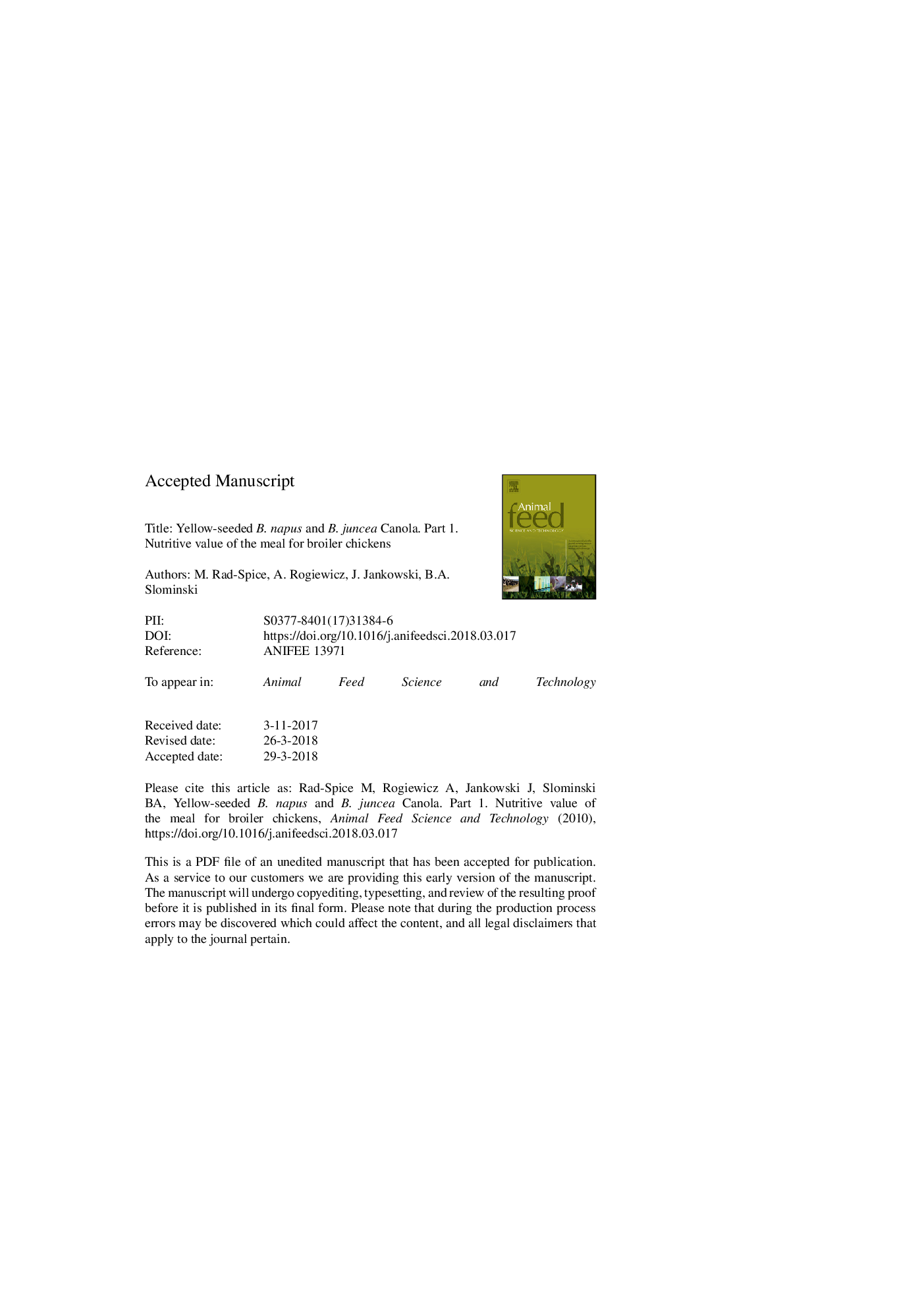| Article ID | Journal | Published Year | Pages | File Type |
|---|---|---|---|---|
| 8490962 | Animal Feed Science and Technology | 2018 | 35 Pages |
Abstract
Breeding attempts to increase the oil in the seed and to reduce the fibre content in the meal have led to the development of yellow-seeded B. napus canola and canola-quality B. juncea. The objective of the current study was to evaluate the chemical and nutritive composition of meals derived from yellow-seeded B. napus and B. juncea canola in comparison with the meal from conventional black-seeded B. napus canola. Apparent metabolisable energy (AMEn) and standardised ileal amino acid digestibility (SIAAD) of the three canola meals (CM) were determined with broiler chickens of 14 to 19 d of age (AMEn assay), or 14 to 21 d of age (SIAAD assay) using 6 cages of 6 birds each per treatment. The nutritive value of CM was further validated in a 35-day performance study using 7 cages of 50 broiler chickens per treatment, including a control group without CM. Birds were fed wheat/maize/soybean meal-based diets containing 150â¯g/kg of canola meals in the starter (1-10 d), grower (11-24 d), and finisher (25-36 d) phases of the experiment. In comparison with the conventional meal, these from yellow-seeded B. napus and B. juncea contained, on dry matter (DM) basis, more crude protein (434 and 472 vs. 411â¯g/kg), more sucrose (101 and 80 vs. 66â¯g/kg), and less total dietary fibre (298 and 289 vs. 350â¯g/kg), respectively. The highest content of all essential amino acids (except cysteine) was observed in B. juncea meal. The AMEn and mean SIAAD coefficients for yellow-seeded B. napus, B. juncea canola, and the conventional black-seeded B. napus were 7.80, 8.75 and 7.96â¯MJ/kg DM, and 0.83, 0.83, and 0.82, respectively. In the growth performance study, body weight gain (BWG) was significantly lower for the yellow-seed B. napus meal as compared with the Control and the black-seed B. napus and B. juncea meals (2.19, 2.32, 2.30, and 2.31â¯kg/bird, respectively). No significant difference in feed conversion ratio (FCR) between the Control and diets containing the three CM were observed indicating that all types of CM could be used effectively and replace soybean meal (SBM) in broiler chicken rations, providing that the diets are formulated based on digestible amino acids and available energy contents.
Keywords
ADFNDICPtmenTDFAMEnNDFNSPFCRBWGSBMNutritive valueBody weight gainacid detergent fibreapparent metabolisable energyChemical compositionBroiler chickenCanola mealtotal dietary fibreneutral detergent fibredry matterfeed conversion rationeutral detergent insoluble crude proteinnon-starch polysaccharidesSoybean meal
Related Topics
Life Sciences
Agricultural and Biological Sciences
Animal Science and Zoology
Authors
M. Rad-Spice, A. Rogiewicz, J. Jankowski, B.A. Slominski,
